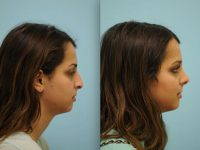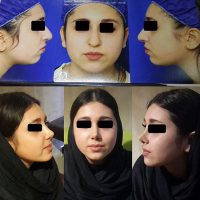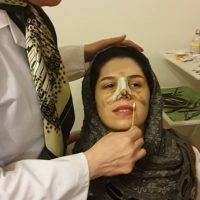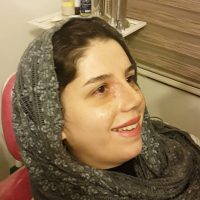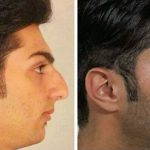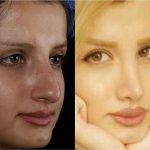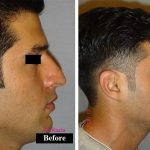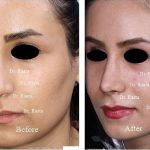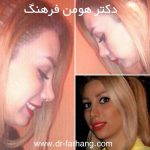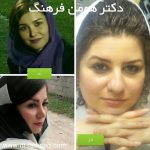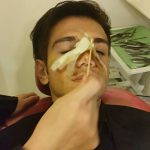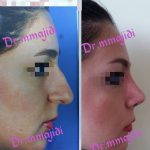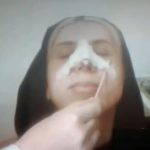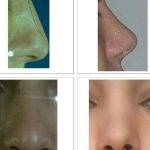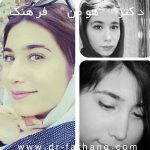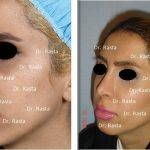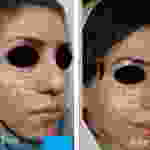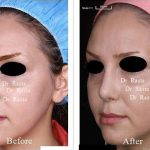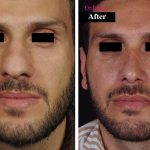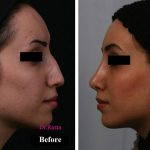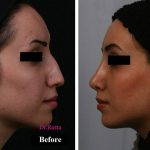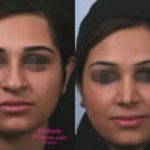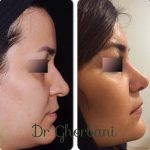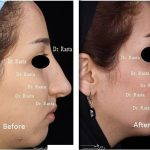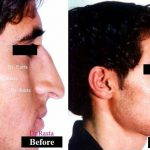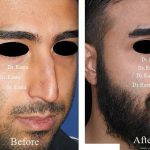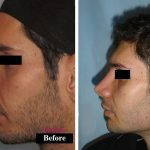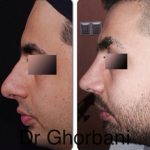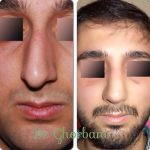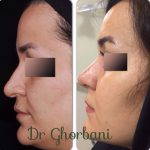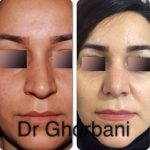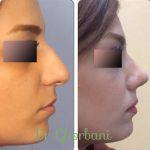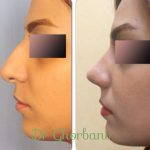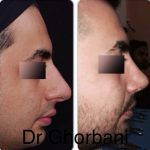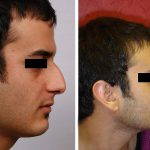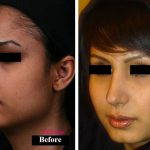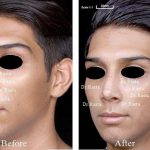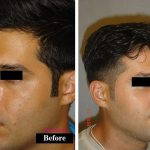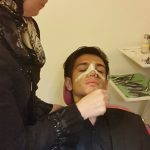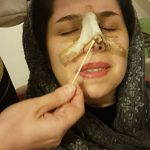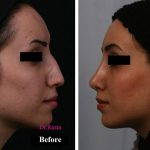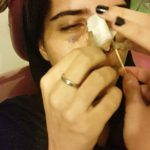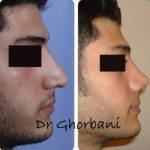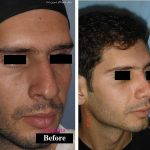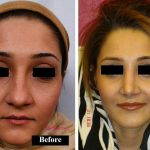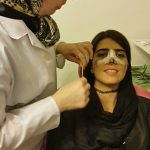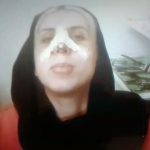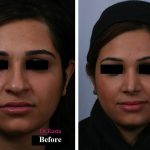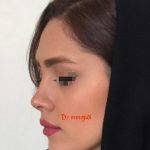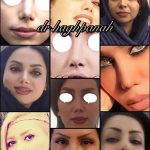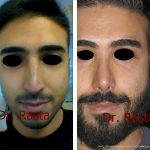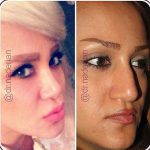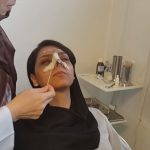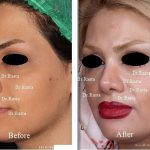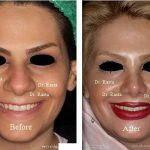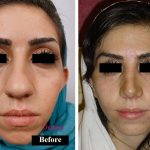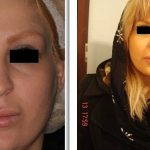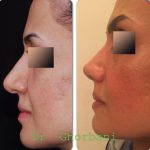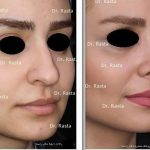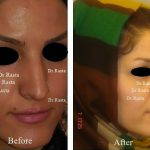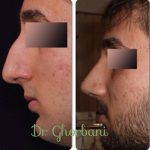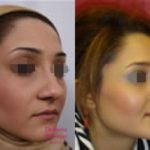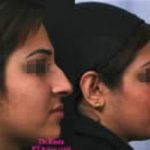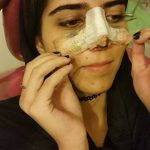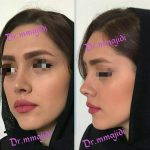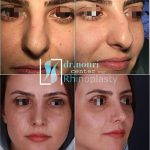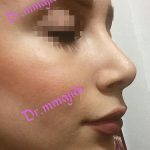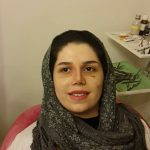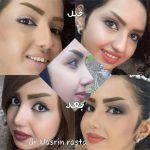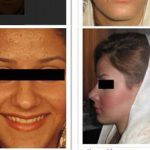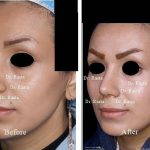Persian Nose Job
Persian nose job is a difficult task even for an experienced surgeon. Persian nose is the exact opposite of the Caucasian nose.
Persian nose is typical low bridge, which makes the nose “low”, and wide nose wings that make nose wide at the bottom.
Often such structure is accompanied by a dense and the porous skin in the nose area. This is an unfavorable moment for the operation, since such skin is forming.
In contrast to the Caucasian nose, where it is necessary to remove the “extra” in the Persian nose needed to add.
The most important thing – that as a result of surgery (rhinoplasty) nose looked harmoniously, because this is an important part of the face and it can not be considered separately, everything must be harmoniously.
Among the methods of raising the bridge of the nose can be called and the use of patient’s own material: cartilage, septum, fascia muscle. But it also has its own nuances. Persian nose job is not a template.
Therefore, these patients require an individual approach. No less problematic part of the Persian nose is a tip, because the skin here is porous and dense.
I shall explain, in the case of a big nose, the reason for dissatisfaction is reduced to hypertrophy of cartilage, so we remove the “extra” cartilage, the operated area closed by the skin and nothing is visible.
But when the skin of the patient is thick and porous, we can remove all the “extra” cartilage, but the tip of the nose can not be changed.
Therefore, for such patients be sure to prescribed the facial cleansing and other procedures that allow to prepare the skin nose for surgery, to make it any less porous and oily.In Iran, rhinoplasty is the most popular and socially acceptable type of plastic surgery.
Typical characteristics of the nose for patients from the Middle East are as follows:
- The tip of the nose hangs down
- Relatively big nose
- A large hump on the nose.
Persian rhinoplasty is the surgery to improve the aesthetic shape of the nose, as well as the solution of some problems related to the difficulty nasal breathing. High aesthetic human demands on themselves, to their appearance makes him turn to a plastic surgeon with requests to change something in your appearance. Much attention is paid to the form and size of the nose. There is a certain notion of the aesthetic norm. It includes the ratio of proportions “ideal” face.
But this does not mean that every imperfect nose should be changed. The whole history of art is a testament. Even the most “wrong” noses can give the face a unique appeal. However, there are features of shape, causing disharmony the face which is better to eliminate, than to try to put up with them. The division of the indications for surgery on aesthetic and functional is conditional. Surgery on the tip nose decides mainly aesthetic problems. Conversely, interference in the bony part, almost always raise the question nasal breathing.Violations of nasal breathing associated with the change in the ratio of internal departments of the nose, occurring as a result of earlier trauma and diseases.
Often there are curvature of the external nose, as a result of shocks and falls. In the ideal case, the simultaneous operations are performed on all parts of the nose.
What can be changed with rhinoplasty?
As a rule, requests on change the shape of the nose are enough typical. Reduce the width, height and the massiveness of the tip of the nose, change the nasolabial angle, only by correcting the cartilage of the nose end.During the operation, the sizes and mutual arrangement of the nasal cartilages are modified a way that would achieve the desired result.
Several more difficult to achieve changes in the bone structures. This requires the mobilize bone structures in the back and sides of the nose. This step is more traumatic, which leads to a lengthening of the postoperative period.
In preparation for the persian nose job is performed a brief medical examination. The operation is performed through incisions inside the nasal passages. Only external transverse low observable trace remains in the narrowest part of the septum.
Tampons are inserted into the nasal passages for a day or two, on the nose gypsum sticker is superimposed for 4-8 days, depending on the type of operation. After surgery, eyelid edema persists for 7-10 days, the nasal tissue recovered in 1-2 months, but the final result can be obtained only in half a year, when fully formed scars and swelling come down.
Persian Nose Jobs Before And After
- Persian Rhinoplasty Reshaping For Man
- Persian Middle Eastern Rhinoplasty Before And After
- A Bulbous, Downturned Persian Nasal Tip
- A Good Candidate For Persian Rhinoplasty
- Candidate For Persian Nose Job Surgery
- Female Persian Nose Pictures (1)
- Female Persian Nose Pictures (2)
- Female Persian Nose Pictures (3)
- Female Persian Nose Pictures (4)
- Male Persian Rhinoplasty Is The Most Complicated Cosmetic Surgery Procedure
- Nose Job Is Extremely Popular In Persian Culture
- Nose Job Rhinoplasty Among Persians Is An Extremely Popular Procedure
- Persian (Iranian) Nosejob Results
- Persian Cat Short Nose
- Persian Cat Snotty Nose
- Persian Culture Is Very Accepting Of Rhinoplasty
- Persian Flat Nose (1)
- Persian Flat Nose (2)
- Persian Girl Nose
- Persian Hook Nose
- Persian Male Nose Job
- Persian Nose Flute
- Persian Nose Job Before And After Pictures (1)
- Persian Nose Job Before And After Pictures (2)
- Persian Nose Job Before And After Pictures (3)
- Persian Nose Job Before And After Pictures (4)
- Persian Nose Job Rhinoplasty Can Provide Wonderful And Culturally Respectful Benefits For The Patient
- Persian Nose Jobs (1)
- Persian Nose Jobs (2)
- Persian Nose Jobs (3)
- Persian Nose Jobs Before And After Photos (1)
- Persian Nose Jobs Before And After Photos (2)
- Persian Nose Jobs Before And After Photos (3)
- Persian Nose Jobs Before And After Photos (4)
- Persian Nose Jobs Before And After Photos (5)
- Persian Nose Jobs Before And After Photos (6)
- Persian Nose Jobs Before And After Photos (7)
- Persian Nose Jobs Before And After Photos (8)
- Persian Nose Rhinoplasty Galery Photos (1)
- Persian Nose Rhinoplasty Galery Photos (2)
- Persian Nose Rhinoplasty Galery Photos (3)
- Persian Nose Rhinoplasty Galery Photos (4)
- Persian Nose Rhinoplasty Galery Photos (5)
- Persian Nose Rhinoplasty Galery Photos (6)
- Persian Nose Surgery Photos (1)
- Persian Nose Surgery Photos (2)
- Persian Nose Surgery Photos (3)
- Persian Nose Surgery Photos (4)
- Persian Nose Surgery Photos (5)
- Persian Nose Surgery Photos (6)
- Persian Nose Surgery Photos (7)
- Persian Nose Surgery Photos (8)
- Persian Plastic Surgery For Nose (1)
- Persian Plastic Surgery For Nose (2)
- Persian Plastic Surgery For Nose (3)
- Persian Revision Rhinoplasty
- Persian Rhinoplasty Involves Detailed Changes In The Underlying Structure Of The Nose
- Persian Rhinoplasty Is A Complicated Procedure
- Persian Rhinoplasty Is A Sub-category Of Ethnic Rhinoplasty
- Persian Rhinoplasty Is Also One Of The Most Challenging Nose Surgeries
- Persian Rhinoplasty Patients Have Unique Facial Structures
- Persian Rhinoplasty Surgical Technique
- Persians Are An Interesting Case
- Photos Of Iran Nose Surgery (1)
- Photos Of Iran Nose Surgery (2)
- Photos Of Iran Nose Surgery (3)
- Photos Of Iran Nose Surgery (4)
- Photos Of Persian Nose Job Before And After (1)
- Photos Of Persian Nose Job Before And After (2)
- Photos Of Persian Nose Job Before And After (3)
- Photos Of Persian Nose Job Before And After (4)
- Plastic Surgery For Persian Nose (1)
- Plastic Surgery For Persian Nose (2)
- Plastic Surgery For Persian Nose (3)
- Plastic Surgery For Persian Nose (4)
- The Persian Nose Is Distinctly Different From The Arabic Nose
- The Persian Nose Pictures (1)
- The Persian Nose Pictures (2)
- The Persian Nose Pictures (3)
- The Persian Nose Pictures (4)
